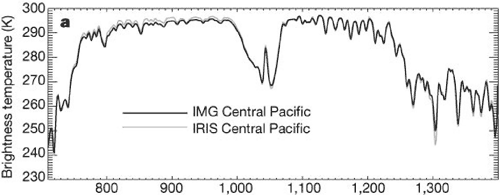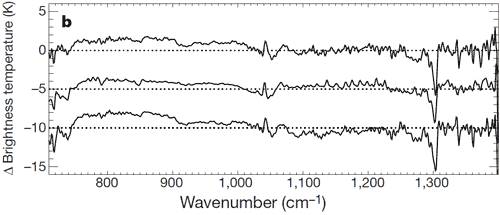Have American Thinker disproven global warming?
Posted on 22 February 2010 by John Cook
American Thinker have published an article The AGW Smoking Gun by Gary Thompson who claims to disprove a key component of anthropogenic global warming. The article begins by stating "...it seems that the only way to disprove the AGW hypothesis is to address problems with the science". This is a fair statement and a return to an emphasis on science in the climate debate is most welcome. So have American Thinker discovered a flaw in climate science that has escaped the attention of the world's climate scientists? Let's examine Thompson's article to find out.
Thompson looks at several peer-reviewed analyses examining satellite measurements of outgoing longwave radiation. As greenhouse gases increase in the atmosphere, they should trap more outgoing longwave radiation. This leads to a build-up of heat in our climate. It also means less longwave radiation escaping to space. The idea is explored in An observationally based energy balance for the Earth since 1950 (Murphy 2009) . Imagine this simplified thought experiment. The earth is in energy balance - incoming sunlight equals Outgoing Longwave Radiation (OLR). There's a sudden increase in CO2. OLR suddenly drops and the planet is in positive energy imbalance. The planet accumulates heat. A hotter object radiates more energy so OLR increases. Eventually OLR increases to the point where it again matches incoming sunlight and the planet is in equilibrium.
Thompson looks at the several papers that compare satellite measurements from the 1970s to 1996 and later. The first paper that performed this analysis was Harries 2001. Thompson posts a graph from that paper that compares outgoing longwave radiation over the central Pacific from the 1970s to 1996. The black line is the outgoing longwave spectrum in 1970. The grey line is the outgoing spectrum in 1996.

Figure 1: Observed IRIS and IMG clear sky brightness temperature spectra for the central Pacific (Harries 2001).
Thompson concludes "After analyzing this graph, the following conclusion can be drawn: The 1997 OLR associated with CO2 is identical to that in 1970". By "analyzing this graph", he presumably means eyeballing the graph as he provides no actual data analysis. This is a shame because in Harries 2001 directly below this graph is data analysis of the calculated difference between the IMG and IRIS satellite data as well as a comparison with modelled results. What do models predict will happen with rising greenhouse gases? Less longwave radiation will escape at the absorptive wavelengths of greenhouse gases such as carbon dioxide and methane. As the atmosphere warms, it will emit more radiation over the whole longwave spectrum. So we expect to see an increase in outgoing radiation over some of the longwave spectrum with sharp drops at certain wavelengths. This is indeed what is observed, consistent with model simulations.

Figure 2: Observed difference between 1970 to 1996 over the central Pacific (top). Simulated difference over the central Pacific (middle). Observed difference for 'near-global' - 60°N to 60°S (bottom) (Harries 2001).
The top curve in Figure 2 is the observed difference between 1970 and 1996 over the central Pacific. This shows strong agreement with the middle curve which is the modelled results. The bottom curve is the observed difference for a near-global area. Observations are consistent with our theoretical expectations of how the greenhouse effect should behave. The close match between observation and simulation lead the paper's authors to conclude "Our results provide direct experimental evidence for a significant increase in the Earth's greenhouse effect that is consistent with concerns over radiative forcing of climate". One wonders how Gary Thompson missed this conclusion as it's stated both in the paper's abstract and in the concluding paragraph.
There is much else that can be gleaned from Figure 2. Interestingly, the near-global observations show a greater drop in outgoing longwave radiation at the CO2 wavelengths around 700 cm-1 compared to the change over tropical regions. Does this indicate the change in greenhouse effect is greater at higher latitudes? It's also worth noting that the data doesn't cover the entire longwave spectrum as CO2 absorption below 700 cm-1 is not shown.
So what do we learn from the American Thinker article. Thompson cites peer-reviewed papers but his analysis consists of eyeballing graphs while spurning the peer-reviewed data analysis. This approach leads to the opposite conclusion of the papers' authors. I first encountered Harries 2001 when documenting the empirical evidence for an enhanced greenhouse effect. After reading the paper, I had many questions. Rather than let the gaps in my understanding lead me to think I knew more than the authors, I emailed my questions to the lead author John Harries, an approachable scientist who was forthcoming with prompt and detailed replies. The American Thinker article does not disprove the enhanced greenhouse effect. It does however provide further evidence for the Dunning-Kruger effect.































 Arguments
Arguments























 0
0  0
0






Comments